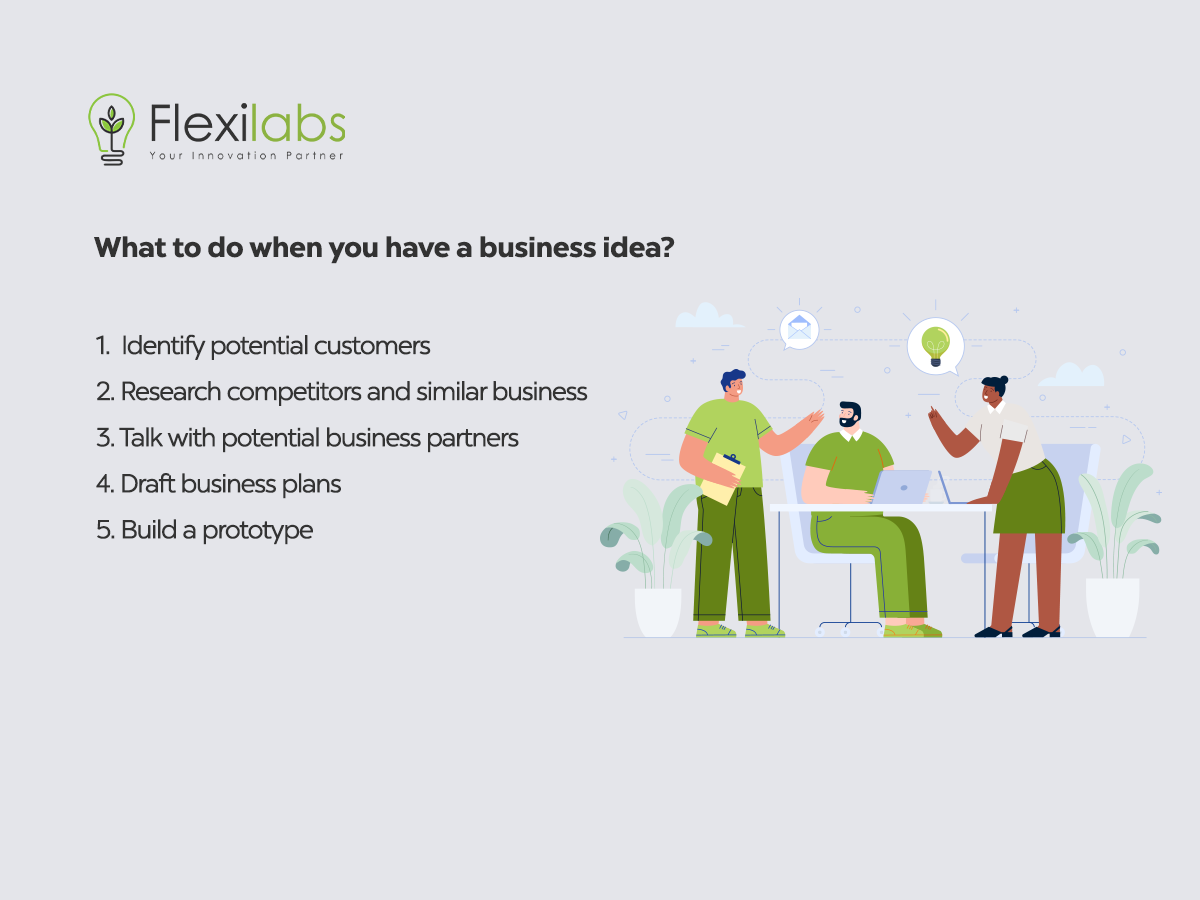Got A Business Idea? What To Do Next?
A business idea is the beginning of a business adventure. It allows entrepreneurs to expand their companies or venture into new industries. Moreover, the business idea is what makes a business different and unique. It runs the success of a business and decides whether a business will fail.
However, the success of a business does not solely rely on the idea itself. To succeed, you must carefully develop it into a plan, execute it properly, and constantly maintain its value.
So, if you are an entrepreneur with new ideas, this article is for you! In this article, we tackle what makes great business ideas, how to come up with one, and steps in getting your idea off the ground to launch a viable business.
What makes a Business Idea Great?
Let’s face it. Anyone can generate a business idea. Ideas come and go in our brains. In fact, according to Healthline, an average person has more than 6,000 thoughts per day. However, some of this could not be great for business.
Great business ideas solve a problem. It is an idea that has the potential to make a difference in people’s lives. Moreover, a great business idea should be able to solve a problem and make money. It should also be sustainable and scalable, meaning it can grow to a large size without losing its original purpose or quality.
How to come up with a great business idea?
As mentioned earlier, while an average human can generate many businesses idea, some of these are not good for business. Sometimes, creating great business ideas needs more than just inspiration and determination.
Likewise, the following are some of the most common ways people develop a business idea.
1) Brainstorm with the right people. Sometimes, you just need to get your mind going. You can do this by brainstorming with friends or coworkers or doing it independently.
2) Get Inspired. It’s often easier to develop a great idea when feeling inspired. Try watching something inspiring or reading about something that interests you.
3) Create a Vision Board. A vision board is an exciting way to collect images and words from magazines and from the internet that represent what you would like your life to be like in the future.
4) Identify Your Passion. If you know what it is about your life that really excites and motivates
What to do when you have a business idea?
As mentioned earlier, not all business ideas are great. Sometimes, you need to validate it first before jumping into transforming the idea into a business. You need to ensure this idea will sell and have customers before investing.
And to validate your idea, you first need to identify specific details of your concept, such as the problem it will solve, potential customers, competitors, and resources. Lastly, you must make it official by developing a business plan and prototype.
Likewise, below are a step-by-step guide on what to do when you have business ideas.

STEP 1. Identify potential customers
Before diving into building a company, identifying potential customers are a must. As a business owner, it allows you to market and advertises your product with a structured approach. Knowing your customers will help you identify, understand, and meet their needs, making it easier to invite customers and generate sales.
When identifying potential customers for your idea, you must consider who might be interested in your product. These people can be categorised into three groups such as:
- People who are currently using similar products and services.
- Prospects have a need not being met by any current products or services.
- Individuals who don’t require your product or service would like to try it out if you offer it.
Knowing which group your prospects fall in is essential because it will help you decide what marketing strategies to use when reaching out to them.
STEP 2. Research competitors and similar business
It is essential to research your potential competitors before you start a business. This will help you create a better product and avoid the pitfalls that other companies have made in the past.
Moreover, conducting a competitor analysis will help you identify the strategies and practices of various companies. Through this, you will understand why customers buy and patronise their product, allowing you to make a better business strategy.
Likewise, some ways to research your competitors are:
- Research their website and try to figure out what they do.
- Read their blog posts and try to analyse what they are saying about their products or services.
- Look at reviews of their products or services on various sites like Yelp, Google, etc.
STEP 3. Talk with potential business partners
As a business with limited resources, building partnerships are essential. A business partner is a valuable asset not just financially but also in terms of experience, ideas, and company operations. They can give you better opportunities, access their networks, or develop solutions.
Still, not every individual with the capability to invest is perfect to be a business partner. You will legally share everything with your business partner, including profits and losses. Likewise, you must ensure that your business partner understands their financial and professional obligation to your company.
As such, below are some tips for finding a potential business partner:
- Attend conferences, events, or startup workshops
- Ask former colleagues for possible business partnership
- Explore online entrepreneurs’ groups and networks
STEP 4. Draft business plans
A business plan is a formal document that provides a comprehensive overview of the company. It outlines the company’s financial history, current status, and plans.
A business plan is not only important for investors but also for employees who want to know what the company’s goals are. It can be used as a roadmap to show them where they are headed and how they will get there.
To start drafting a business plan, you must have all the information about your company. Start by including an analysis of your target market, competitive landscape, and product summary. Next, set up an organisational chart that fits all your company’s positions and responsibilities. Finally, add financial and operational planning.
STEP 5. Build a prototype
And finally, it’s time to build a prototype. A prototype is a physical or digital representation of a product. It can demonstrate what the product will be like when it is finished.
Prototypes are essential for startups because they allow entrepreneurs to test their idea before they invest in developing the final product. This way, they can determine if their idea will work and make changes if necessary.
Conclusion
And that’s it! If you have an idea, make sure to follow these steps and be on your way to starting your company. Just make sure to research everything carefully and take your time to plan out everything.
And if you need further help, better talk to a professional. Flexilabs can help you. We help startups turn the ideas of their dreams into reality. Contact us now!

